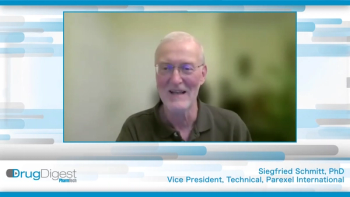
Pharmaceutical Technology Europe
- Pharmaceutical Technology Europe-03-01-2006
- Volume 18
- Issue 3
Biopharmaceuticals market overview
Pharma companies are forming alliances with less established biotech companies, which significantly drive the technological innovation and the overall market growth.
In the last 6 years, 65–70% of the 150 biotech drugs in today's market were approved, 11 of which reached blockbuster sales status in 2004. Such successes promise large medical and commercial advances for this area and 'hope' seems to be the major driving factor for investment. However, despite revolutionary promises biotechnology remains a risky business, a fact demonstrated by previous unstable stock market performance.
Big Pharma currently dominates the biotechnology industry. Despite this, biotech companies are expanding and improving their R&D capabilities. Although biotechnology products are gaining importance in healthcare, biotech drugs make up only 7–8% of the total pharmaceutical market. Several biotechnology-based products are still in the preclinical and clinical phase, raising the concerns associated with clinical phase failures.
Global biopharmaceutical market
The biopharmaceutical market witnessed 15–17% revenue growth in 2004, which is more than double the growth rate of the global pharmaceutical market. With revenues of $45 billion in 2004, the global biopharmaceutical sector accounted for approximately 8.1% of the total global pharmaceutical market. Revenues are anticipated to reach $92 billion in 2011, at an average annual growth rate (AAGR) of 10.3% for the period 2004–2011. Projects in the pipeline and continued research advances are likely to foster the growth of this segment further. Biopharmaceuticals account for about 25–30% of the total product pipeline (Figure 1).
US biopharmaceuticals accounted for approximately 60% of the global market in 2004. Europe lags behind the US in terms of market share because of challenging factors such as pricing and reimbursement policies that restrain the launch of high priced biotechnology based drugs. In 2004, the five main markets in Europe were the UK, Germany, France, Italy and Spain — together accounting for approximately 20% of the global biotechnology market. The sluggish acceptance of biotechnology-based products in Japan correlates with it having a mere 6.5–7.0% total market share. Emerging markets such as India, China and Eastern European countries are likely to witness strong growth in the coming years.
Key points
An ageing population and the associated increase in diseases provide significant opportunities for biopharmaceutical manufacturers. Oncology, central nervous system diseases, cardiovascular, autoimmune diseases, inflammatory diseases, diabetes, hormone/enzyme replacement, respiratory and infectious diseases are the major therapeutic areas that are likely to see significant biotech product launches in the next 10 years. Oncology is the focal point for major biotech projects globally and it can be assumed that the products launched for this area are likely to be catalysts for market growth in the coming years.
The growth of the biopharmaceutical market is anticipated to occur through new product launches and remarketing of existing compounds when their patent has expired. The demand for biotech products is greatest in complex areas such as multiple sclerosis where conventional pharmaceutical products have been less successful. The innovation gap in the pharmaceutical industry has created demand for biotechnology-based product development with low productivity, rising R&D costs and generic competition hindering more traditional pharma business. The result is heavy investment in biotechnology-based products by pharmaceutical companies.
Figure 1 Global biopharmaceuticals market revenue forecast, 2001â2011.
Increased regulatory approval rates for biotech products compared with small molecule drug candidates are also driving growth of the market. Recombinant DNA-based products are one such group with high approval rates from regulatory authorities. With innovations in the diagnostics arena, the biotechnology market is likely to match the previously unmatched markets. In future, advances in diagnostics coupled with biotechnology could lead to increased emphasis on personalized medicines. Moreover, advances in biotechnology are derived from developments in enabling technologies such as genomics, proteomics, cellomics, metabolomics, toxicogenomics and pharmacogenomics.
The major barrier to market growth however, is the cost containment policies practised in most developed countries. The high development costs lead to high prices, which potential buyers may not be willing to pay. A number of cost containment measures have been introduced by the governments in these countries, which present a threat to expensive biotechnology products.
The ethical debate surrounding areas of biotech research such as embryonic stem cell-based research for human therapeutic development could pose a challenge to the biopharmaceutical market.
Figure 2 Global biogenerics market revenue forecast, 2006â2011.
Biogenerics
Currently, at an entrepreneurial phase, the biogenerics market poses a major threat to the biopharmaceutical market. The first product in this market, the recombinant human interferon alpha (rh IFN alpha) manufactured by BioPartners, is expected to launch this year. It is anticipated to have an impact on the revenue of ethical biopharmaceutical companies in Europe and the US and, according to Frost & Sullivan estimates, could generate up to $16.39 billion by 2011 at an AAGR of 69.8% between 2007 and 2011 (Figure 2).
The biogenerics market is set to start in earnest this year and high growth is anticipated as its first product is launched, an indicated 212.8% growth rate. In the initial phases of this market, industry participants are expected to focus on three main biologics that are about to come off patent. These comprise derivatives of erythropoietin, interferons and granulocyte colony stimulating factor (G-CSF). Although there were 30 companies actively participating in this market in 2004, less than 20 are thought to be serious contenders with the ability to bring products to the market. These 20 already exist as pharmaceutical generics companies including Sandoz, Pliva, Teva Pharmaceutical Industries, and Indian companies such as Wockhardt and Ranbaxy. Several manufacturers are developing recombinant human growth hormone (rh HGH) for the treatment of a range of adult and paediatric growth disorders. BioPartners has already filed for regulatory approval for the first products in this market. Sandoz also filed rh HGH for approval, but was rejected by the European Commission in 2004. A refiling of this product is anticipated.
Competitive analysis
Traditional pharmaceutical companies such as Johnson & Johnson, Sanofi-Aventis, Eli Lilly and Novo Nordisk are some of the major companies capitalizing on biotechnology. Pharma companies are forming alliances with less established biotech companies at various levels of the drug life cycle, which significantly drive the technological innovation and the overall market growth.
The top 10 biopharmaceutical companies in 2004 were Amgen, Genentech, Serono, Biogen ldec, Genzyme, Gilead, MedImmune, Chiron, Millennium and Intermune. Amgen is the clear leader in the market with total biopharmaceutical revenues of $9.97 billion in 2004 with growth of over 27%. Its top selling blockbuster products, which account for 99% of the total sales, are epogen, aranesp, enbrel, neulasta and neupogen. Amgen depends on these five products and with no new potential blockbusters in the pipeline, the rapidly growing $10.0 billion company will need to keep broadening the product range to maintain a growth rate over 20% and meet shareholder's requirements. Amgen has also successfully developed its first small molecule drug — Sensipar to treat chronic kidney diseases.
With revenues of $3.74 billion and growth of over 43%, Genentech stands second in the biotechnology market. It is involved in a large-scale manufacturing expansion to generate a leading oncology portfolio in the coming years. Previously, the company provided contract manufacturing services to Amgen, though it terminated the contract in 2005 in line with its new corporate aim. The expanding immunology portfolio and strong results for Xolair, its asthma product, are all positive trends for the company. The only blockbuster product in its portfolio is Rituxan (a treatment for nonHodgkin's lymphoma) with total sales of $1.71 billion in 2004. Its other top products are Avastin, Herceptin, Nutropin/Protropin and Activase/TNKase. These five together account for approximately 82% of the total company sales.
With total sales of approximately $2.17 billion and growth of 17% in 2004, Serono is third in the market. The multiple sclerosis product Rebif has seen growth of 33% and total sales of $1.09 billion, and is the major factor driving the company's growth. Serono faces close competition from Biogen ldec, which has witnessed total sales of $2.11 billion and growth of 23% in 2004. Its major product Avonex, also used in the treatment of multiple sclerosis, is the only product in the company's portfolio with blockbuster sales figures.
Future outlook
Overall, the future looks bright for the biotechnology sector with continued innovation and success. Although there are significant restraints on the market, it is likely to witness an increasing penetration of biotech products. The targeted approach has led to increasing prominence of biotechnology in the human therapeutic area. (All statistics and figures are the result of research conducted by Frost & Sullivan.)
Himanshu C. Parmar is team leader and industry analyst, pharmaceutical and biotechnology healthcare (EMEA) at Frost & Sullivan, UK.
Articles in this issue
almost 20 years ago
A practical approach to PAT implementationalmost 20 years ago
Viral filtration of plasma-derived human IgGalmost 20 years ago
Pharmaceutical clean rooms: specialty hygiene coatingsalmost 20 years ago
Online auctionsalmost 20 years ago
APIs: Why EU authority oversight is vitalalmost 20 years ago
Talking Point: The patent problem with metabolitesNewsletter
Get the essential updates shaping the future of pharma manufacturing and compliance—subscribe today to Pharmaceutical Technology and never miss a breakthrough.





